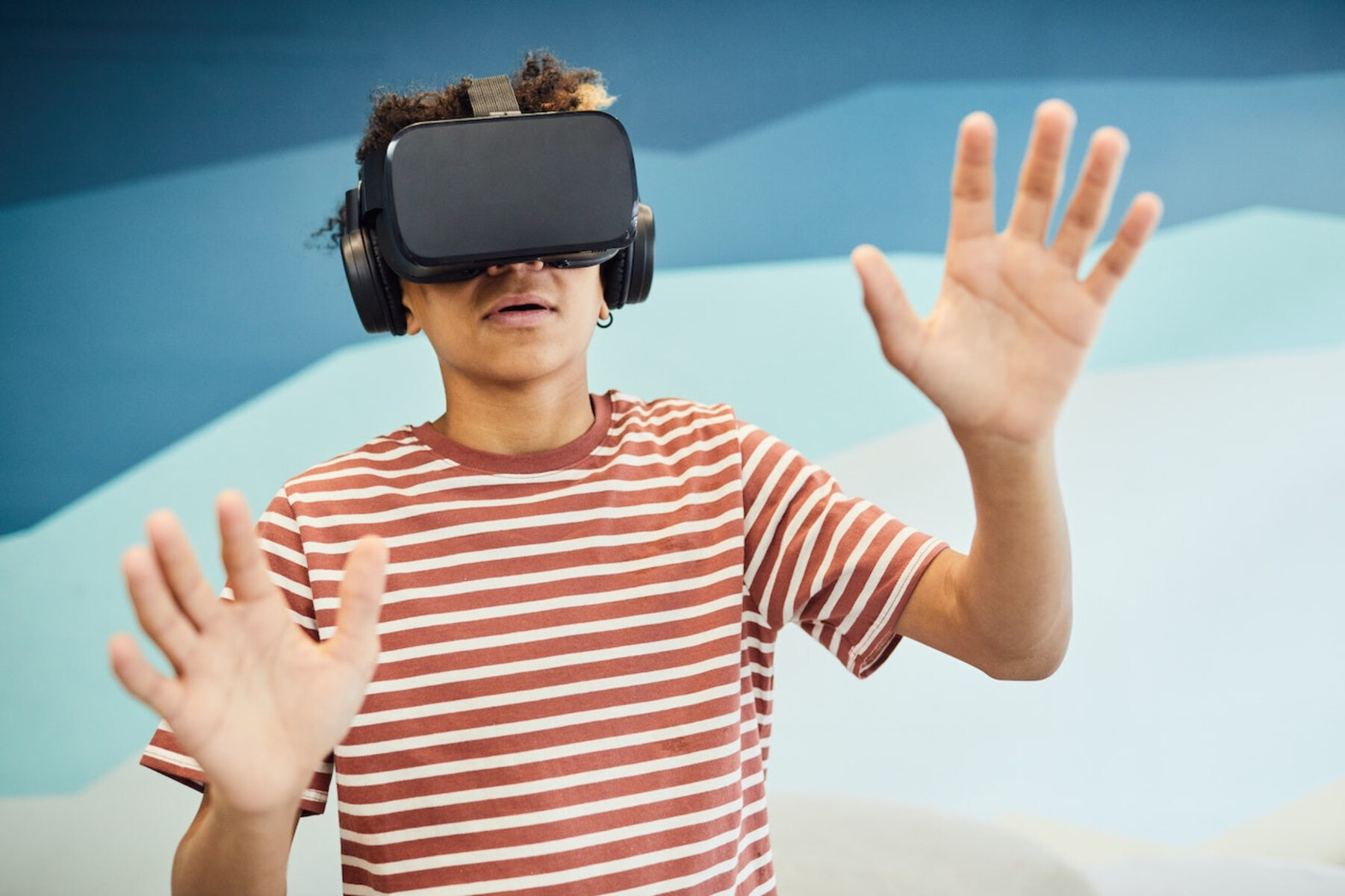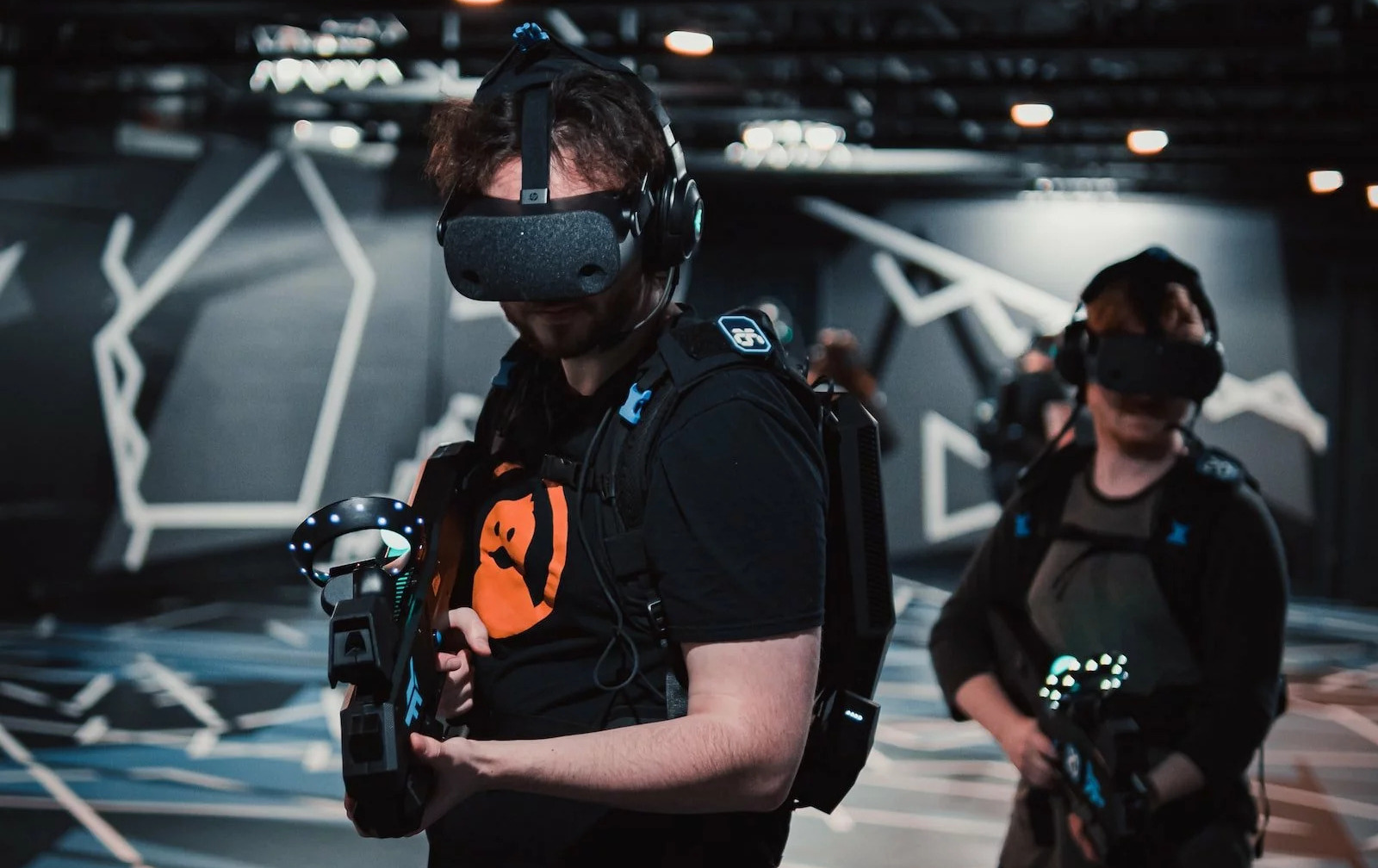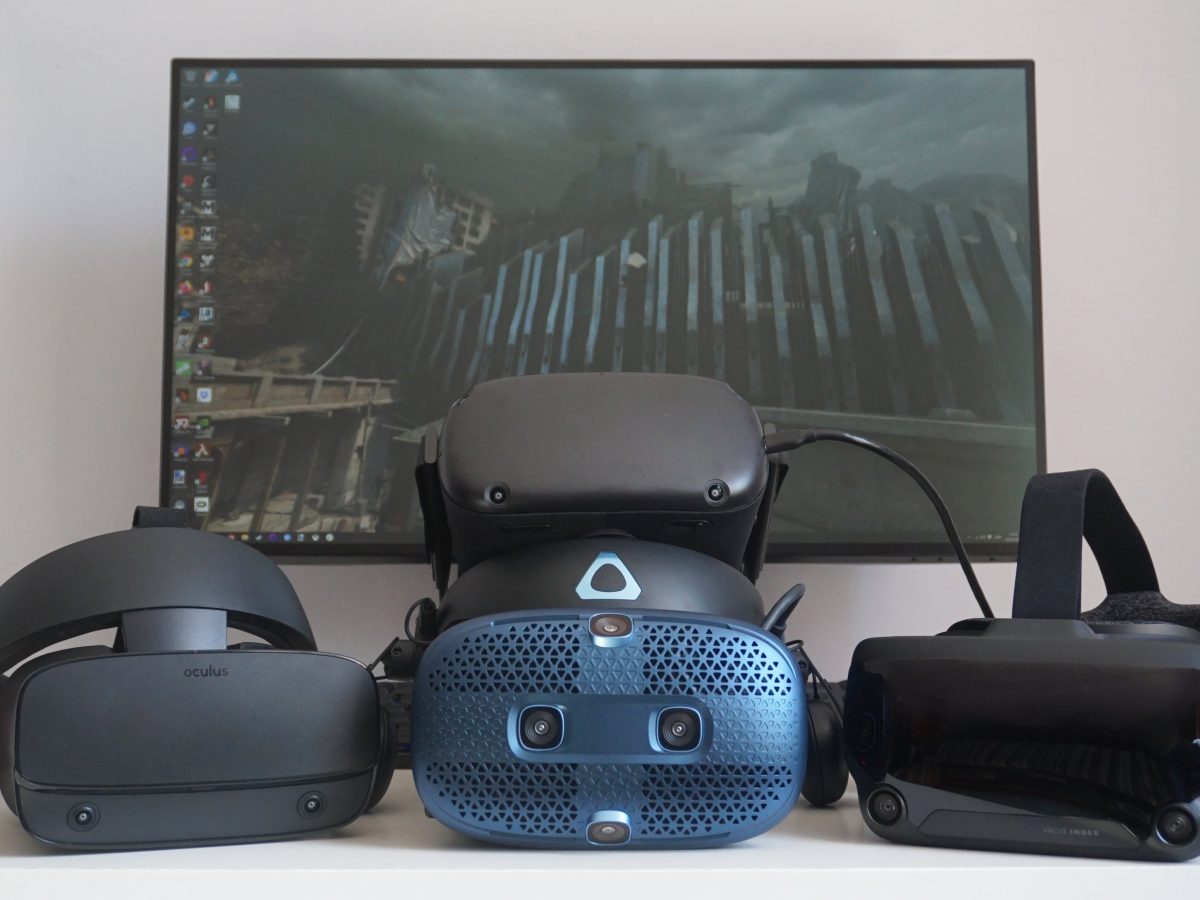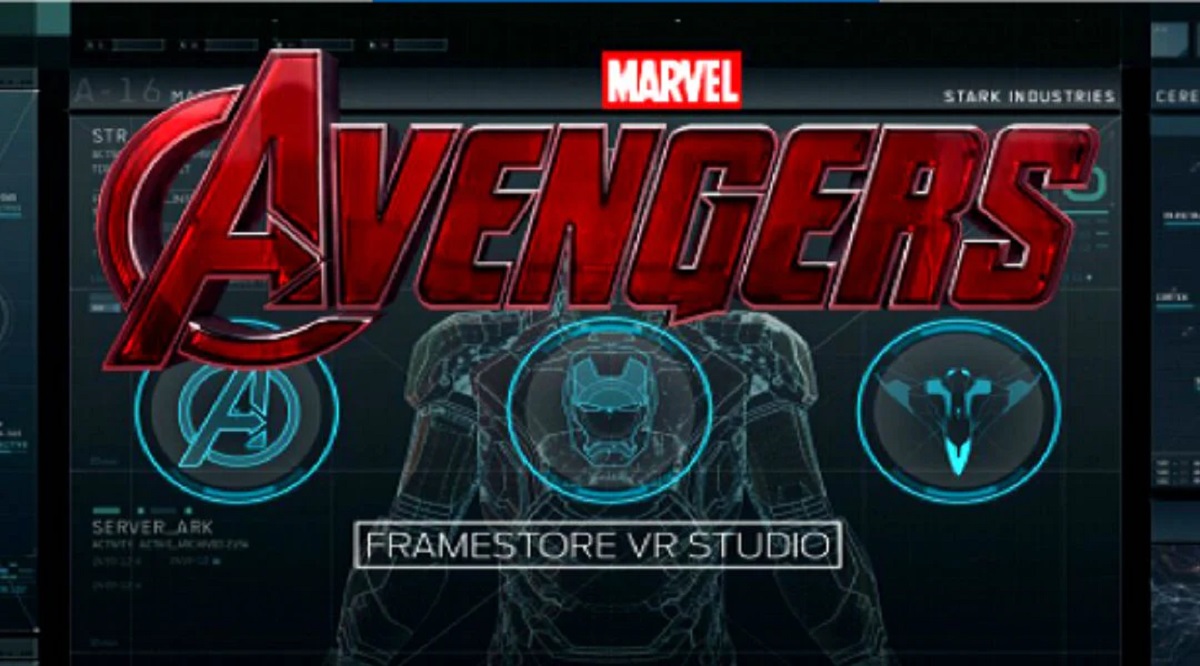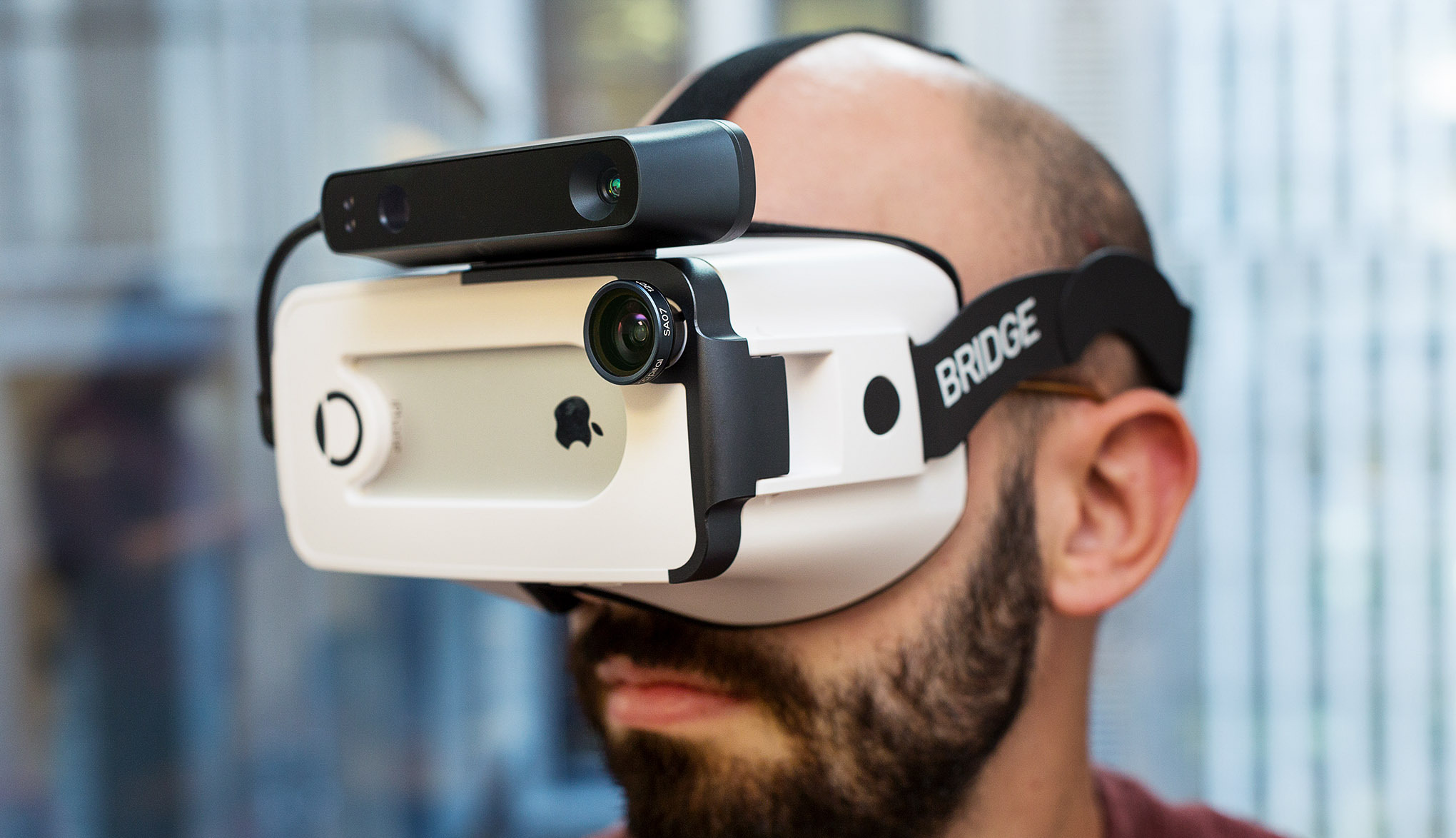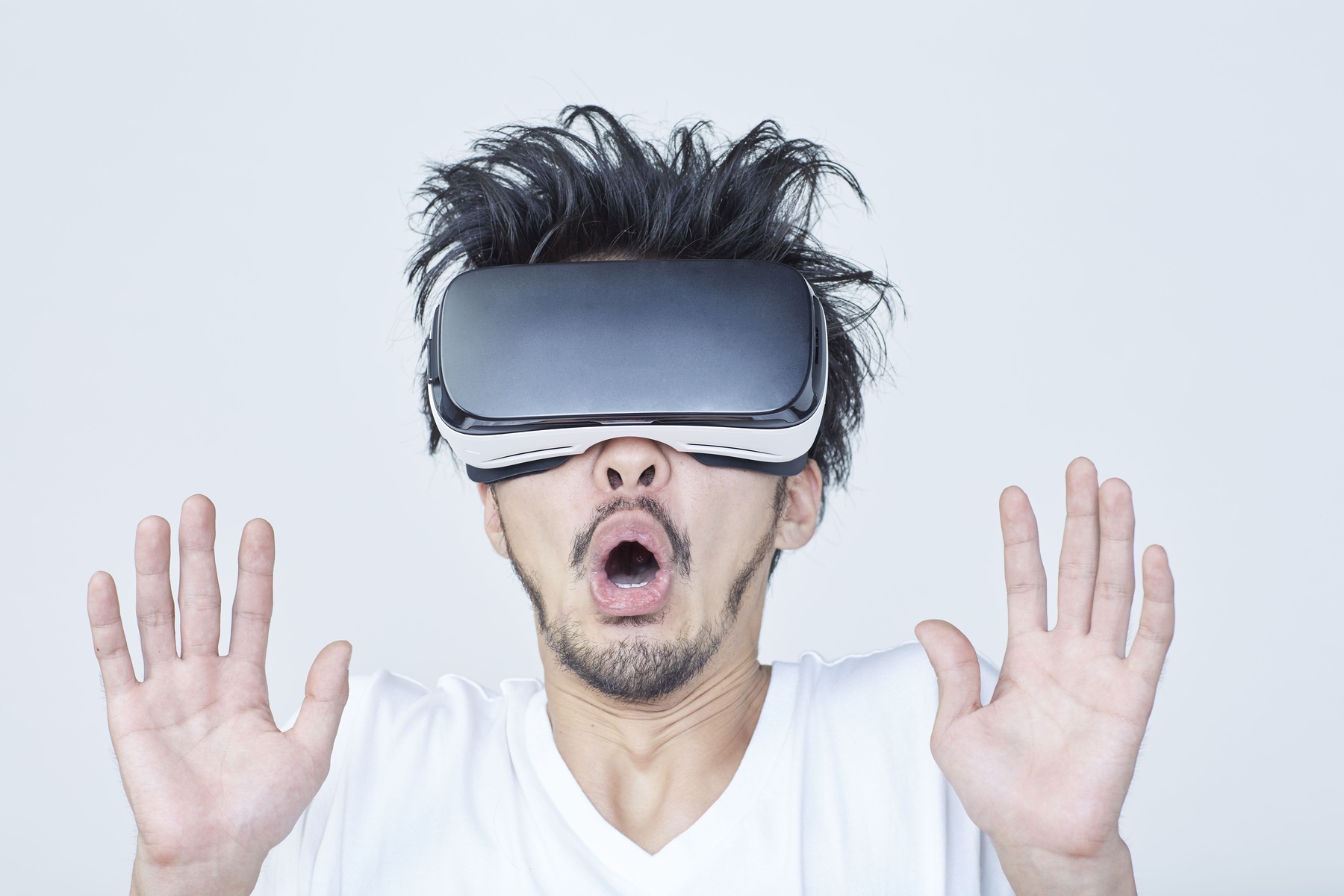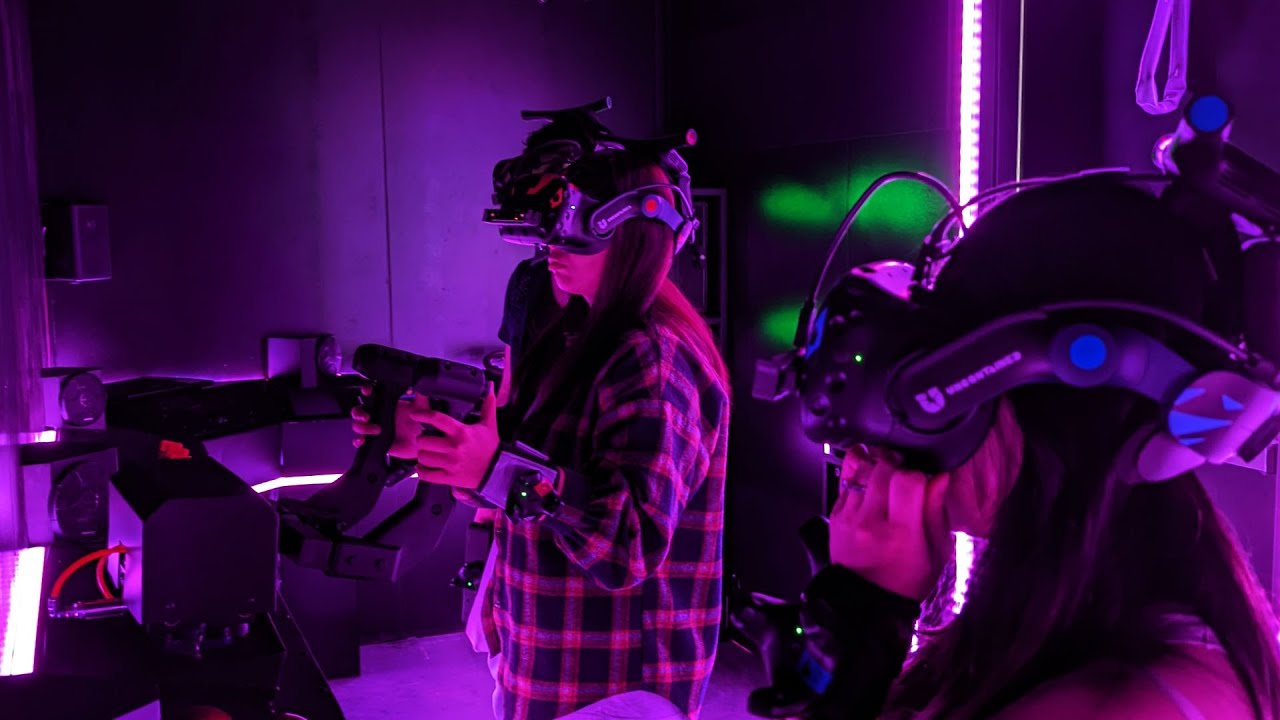Introduction
Virtual Reality (VR) technology has revolutionized the way we experience digital content, transporting us to immersive and interactive virtual worlds. While VR headsets have become increasingly popular, one area of innovation that has significantly enhanced the immersion factor is full body tracking.
Full body tracking in VR allows users to not only experience virtual reality through their eyes but to also engage their entire body. By utilizing special sensors and advanced motion tracking technology, these systems can detect the movement of your limbs and replicate them in the virtual environment.
Imagine being able to walk, run, jump, and crouch in a virtual game or simulation, and have your movements accurately represented in real-time. It not only adds to the level of realism, but it also fosters a deeper sense of presence and embodiment within the virtual space.
In this article, we will explore how full body tracking works in VR, the benefits it offers, and highlight some of the VR headsets that support this exciting feature.
How Full Body Tracking Works in VR
Full body tracking in VR relies on a combination of hardware and software. Typically, this involves the use of motion tracking sensors, cameras, and specialized algorithms to capture and interpret the user’s movements.
The most common approach to full body tracking is through the use of external sensors. These sensors, often mounted on stands or placed around the room, emit infrared light or use laser-based technology. They track the position and orientation of reflective markers or sensors placed on various parts of the user’s body. This allows the system to accurately capture the user’s movements in three-dimensional space.
In addition to external sensors, some VR headsets utilize built-in sensors and cameras to track the user’s movements. These headsets use a combination of accelerometers, gyroscopes, and optical sensors to capture data and interpret the user’s body motions.
Once the user’s movements are captured, the data is sent to the VR system, which then translates it into corresponding movements within the virtual environment. This real-time tracking and mapping of the user’s body create a seamless and immersive experience, where their every move is mirrored in the virtual world.
Software algorithms play a crucial role in processing the data from the sensors and accurately mapping it to the user’s virtual avatar. These algorithms analyze the position, orientation, and velocity of the tracked body parts to ensure smooth and natural movement replication.
It’s important to note that full body tracking is not limited to skeletal movements. Some systems also capture hand gestures, allowing for precise hand tracking and interaction with virtual objects. This level of detail further enhances the immersion and interactivity of virtual reality experiences.
Overall, full body tracking in VR is a complex and precise process that combines hardware and software technologies to capture, interpret, and replicate the user’s movements in the virtual world. It’s a key component in creating truly immersive and engaging VR experiences.
The Benefits of Full Body Tracking
Full body tracking in VR offers numerous benefits that significantly enhance the overall experience and immersion. Here are some of the key advantages:
1. Realistic Movement Replication: Full body tracking allows for accurate replication of the user’s body movements in virtual reality. This level of realism creates a more immersive and engaging experience, as users can walk, run, jump, and interact with objects in a more natural and intuitive way.
2. Enhanced Physical Engagement: With full body tracking, users are no longer limited to using handheld controllers or gamepads. Instead, they can use their entire body to physically interact with the virtual environment. This physical engagement adds a new dimension of interactivity and makes the VR experience more dynamic and exciting.
3. Improved Spatial Awareness: Full body tracking provides users with a greater sense of spatial awareness within the virtual world. They can accurately perceive the distances and sizes of objects, navigate through the environment, and interact with various elements in a more intuitive and realistic manner.
4. Immersive Social Interactions: Full body tracking enables more realistic and immersive social interactions in multiplayer VR experiences. Users can see and interpret the body language and movements of other players, further enhancing the feeling of presence and connection in shared virtual spaces.
5. Physical Fitness and Exercise: Full body tracking in VR can serve as a fun and engaging way to exercise and stay active. By using their entire body to play games or participate in virtual fitness programs, users can burn calories, increase their heart rate, and improve their physical fitness while enjoying immersive VR experiences.
6. Professional Training and Simulation: Full body tracking is also valuable in professional training and simulation scenarios. Industries such as healthcare, aviation, and defense can utilize VR technology with full body tracking to create realistic training environments for professionals, allowing them to practice complex tasks and procedures in a safe and controlled virtual setting.
In summary, full body tracking in VR offers a range of benefits that enhance immersion, interactivity, and realism. From realistic movement replication to improved spatial awareness and physical engagement, this technology elevates the overall VR experience and opens up new possibilities in various fields, from gaming to professional training.
VR Headsets with Full Body Tracking
Not all VR headsets have built-in support for full body tracking. However, there are several high-end options available that offer this feature, providing users with a more immersive and interactive experience. Here are some of the VR headsets that support full body tracking:
1. HTC Vive Pro: Developed by HTC, the Vive Pro is a premium VR headset that offers full body tracking capabilities. It uses external sensors called “Lighthouse” to track the position and movement of the user’s body. With its precise tracking system, the Vive Pro enables users to engage in full-body movements, enhancing immersion in VR experiences.
2. Oculus Rift S: The Oculus Rift S, manufactured by Facebook-owned Oculus, does not have native support for full body tracking. However, with the addition of external sensors like the Oculus Rift Body Tracker, it is possible to achieve full body tracking functionality. This allows Oculus Rift S users to enjoy a more immersive and interactive VR experience.
3. Valve Index: The Valve Index is a high-end VR headset developed by Valve Corporation. It comes with external base stations that enable full body tracking. With the Valve Index, users can enjoy precise tracking of their body movements, including walking, crouching, and hand gestures, allowing for a more immersive and natural VR experience.
4. Pimax 8KX: The Pimax 8KX is a cutting-edge VR headset that offers support for full body tracking. It uses external sensors or base stations to track the user’s body movements, providing a highly accurate and immersive VR experience. With its wide field of view and high-resolution display, the Pimax 8KX offers a truly immersive virtual reality experience combined with full body tracking.
These are just a few examples of VR headsets that support full body tracking. As VR technology continues to advance, more headsets are likely to incorporate this feature, further enhancing the immersion and interactivity of virtual reality experiences.
It’s worth noting that while full body tracking is an exciting feature, it does require additional sensors or accessories in most cases. Therefore, users should consider their specific needs and budget when choosing a VR headset with full body tracking capabilities.
Overall, VR headsets with full body tracking provide users with a more immersive and interactive experience, allowing them to engage their entire body in virtual reality environments. Whether for gaming, professional training, or other applications, these headsets offer an enhanced level of realism and interactivity that truly pushes the boundaries of virtual reality technology.
HTC Vive Pro
The HTC Vive Pro is a top-of-the-line VR headset known for its advanced features and impressive full body tracking capabilities. Developed by HTC, the Vive Pro offers an immersive VR experience with high-resolution displays and precise tracking. Let’s dive into the details of what makes the HTC Vive Pro a standout choice for full body tracking.
The Vive Pro utilizes external sensors called “Lighthouse,” which are placed around the room to track the user’s movements. These sensors emit laser-based technology, precisely tracking the position and orientation of the user’s body in real-time. This allows for accurate replication of the user’s full body movements within the virtual environment.
With the Vive Pro, users can walk, run, jump, crouch, and perform intricate motions, all of which are accurately translated into the virtual world. This level of realism adds a new layer of immersion and interactivity, making VR experiences feel more natural and engaging.
The Vive Pro’s full body tracking extends beyond simple limb movement. It also includes hand tracking, allowing for precise gestures and interactions with virtual objects. Whether it’s grabbing and manipulating objects or gesturing with your hands, the Vive Pro captures and replicates these movements, further enhancing the immersive experience.
In addition to its exceptional full body tracking technology, the Vive Pro boasts impressive display capabilities. It features dual OLED displays with a combined resolution of 2880 x 1600 pixels, offering clear visuals and vibrant colors. The headset also has an adjustable IPD (interpupillary distance) to ensure optimal visual comfort for a wide range of users.
Comfort is another key feature of the Vive Pro. It is designed with ergonomics in mind, featuring adjustable head straps and a balanced weight distribution. The headset is comfortable to wear for extended periods, allowing users to fully immerse themselves in VR experiences without discomfort or strain.
Furthermore, the Vive Pro offers compatibility with a wide range of VR games and applications through the SteamVR platform. Users can explore a vast library of VR content, including games, educational experiences, artistic creations, and much more.
In summary, the HTC Vive Pro is a premium VR headset that excels in full body tracking capabilities. With its external sensor system, high-resolution displays, and comfortable design, it provides users with an immersive and realistic VR experience. Whether for gaming, professional training, or other applications, the HTC Vive Pro sets the standard for full body tracking in the world of virtual reality.
Oculus Rift S
The Oculus Rift S is a popular VR headset produced by Facebook-owned Oculus. While the Rift S does not have native support for full body tracking, it can still be used with external sensors to achieve this functionality and enhance the immersive VR experience.
When it comes to full body tracking with the Oculus Rift S, users can utilize external sensors such as the Oculus Rift Body Tracker. By strategically placing these sensors in the room, the Rift S can accurately track the position and movement of the user’s body, allowing for a more immersive and interactive VR experience.
With full body tracking enabled, users can perform natural movements like walking, crouching, and physically interacting with objects in virtual reality. This level of immersion adds a new dimension to gaming, training, and other applications, as users can engage with virtual environments using their entire body.
While the Oculus Rift S may not have built-in support for full body tracking, it does offer impressive features. The headset features a high-resolution display with a resolution of 2560 x 1440 pixels, providing sharp visuals and an immersive viewing experience.
In terms of comfort, the Oculus Rift S is designed with ergonomics in mind. It features a halo headband design that evenly distributes the weight of the headset, reducing strain on the user’s head during extended VR sessions. The built-in audio system also provides spatial audio, adding to the immersive experience.
The Oculus Rift S is PC-powered and offers compatibility with a wide range of VR games and applications through the Oculus Store and SteamVR platform. Users can explore a vast library of content, including games, experiences, and educational applications.
It’s worth noting that while the Rift S can achieve full body tracking with external sensors, it may not offer the same level of precision and ease of setup as headsets specifically designed for full body tracking.
In summary, while the Oculus Rift S does not natively support full body tracking, it can be used with external sensors to enhance the VR experience. With accurate tracking of body movements, users can engage with virtual environments more naturally and interactively. Combined with its high-resolution display and comfortable design, the Oculus Rift S is a popular choice for VR enthusiasts looking to augment their experience with full body tracking.
Valve Index
The Valve Index is a high-end VR headset developed by Valve Corporation, known for its advanced features and exceptional full body tracking capabilities. The Index offers an immersive and realistic VR experience that allows users to fully engage their entire body in virtual environments.
The Valve Index utilizes external base stations called “SteamVR Tracking 2.0” to enable precise full body tracking. These base stations emit laser-based sensors that accurately track the position and movement of the user’s body. The result is a highly accurate and responsive tracking system that allows for seamless replication of body movements in virtual reality.
With the Valve Index, users can walk, run, crouch, and perform a wide range of natural body movements, all of which are accurately translated into the virtual environment. This level of immersion enhances the overall experience, making VR games, simulations, and interactive experiences feel realistic and engaging.
In addition to full body tracking, the Valve Index offers impressive display capabilities. It features dual LCD panels with a combined resolution of 2880 x 1600 pixels, providing sharp and detailed visuals. The headset also has a high refresh rate of 120Hz, which further enhances the visual experience by reducing motion blur and providing smooth gameplay.
Comfort is a key aspect of the Valve Index design. It features an adjustable head strap, ensuring a secure and comfortable fit for a wide range of users. The headset also incorporates adjustable IPD (interpupillary distance), allowing users to customize the visual experience for optimal clarity and comfort.
Furthermore, the Valve Index boasts excellent audio quality with its built-in speakers. These speakers provide high-fidelity sound and offer a more immersive audio experience. Additionally, users have the option to use 3.5mm headphone jacks for increased audio customization.
The Valve Index is compatible with the SteamVR platform, offering access to a wide range of VR games and experiences. Users can explore a diverse library of content, including AAA games, indie games, educational applications, and more.
In summary, the Valve Index is a top-tier VR headset that excels in full body tracking capabilities. With its precise external tracking system, high-resolution displays, comfortable design, and immersive audio, it provides users with a truly immersive and realistic VR experience. Whether for gaming, simulations, or professional applications, the Valve Index sets a high standard for full body tracking in the world of virtual reality.
Pimax 8KX
The Pimax 8KX is a cutting-edge VR headset that offers support for full body tracking, delivering a highly immersive virtual reality experience. Known for its wide field of view and high-resolution display, the Pimax 8KX takes full body tracking to the next level.
The 8KX utilizes external sensors or base stations to track the position and movement of the user’s body. By accurately capturing body movements, the Pimax 8KX allows for precise replication of the user’s actions in the virtual environment. This level of tracking accuracy enables users to engage their entire body, from walking and running to hand gestures and interactions with virtual objects.
One of the standout features of the Pimax 8KX is its impressive display technology. The headset features dual Quad HD displays, providing a combined resolution of 3840 x 2160 pixels. This high-resolution display enhances the visual clarity and detail, making virtual reality experiences more immersive and lifelike.
Additionally, the Pimax 8KX boasts an impressive field of view of up to 200 degrees, surpassing most other VR headsets on the market. This wide field of view provides users with a more natural and peripheral vision-like experience, further enhancing the sense of immersion in virtual environments.
Comfort is also a priority for the Pimax 8KX. The headset is designed with a cushioned faceplate and a strap system that evenly distributes the weight, ensuring long-lasting comfort during extended VR sessions. The audio is delivered through integrated speakers, providing spatial audio that adds to the immersive experience.
The Pimax 8KX offers compatibility with popular VR platforms, giving users access to a wide range of VR games, applications, and experiences. Whether users are interested in gaming, simulations, or professional applications, the Pimax 8KX provides ample opportunities for immersive virtual reality experiences.
It is important to note that full body tracking with the Pimax 8KX may require additional sensors or accessories, depending on the specific tracking system used. Users should ensure compatibility and consider their needs before investing in full body tracking equipment.
In summary, the Pimax 8KX is a high-end VR headset that offers exceptional full body tracking capabilities. With its wide field of view, high-resolution display, and comfortable design, it provides users with immersive virtual reality experiences. Whether for gaming, artistic creations, or professional applications, the Pimax 8KX pushes the boundaries of full body tracking and sets a new standard in the world of VR.
Conclusion
Full body tracking in VR has transformed the way we interact with virtual environments, providing a more immersive and realistic experience. By accurately capturing and replicating our body movements, full body tracking enhances the level of immersion and interactivity in VR games, simulations, training, and other applications.
We explored how full body tracking works in VR, noting the combination of hardware and software technologies that enable this feature. From external sensors to built-in cameras and advanced algorithms, these systems accurately track our body movements and translate them into virtual actions.
The benefits of full body tracking are numerous. It offers realistic movement replication, allowing users to engage their entire body in virtual environments. This, in turn, enhances physical engagement, spatial awareness, and social interactions in multiplayer VR experiences.
We also covered some VR headsets that support full body tracking, highlighting their unique features and capabilities. The HTC Vive Pro, Oculus Rift S (with additional accessories), Valve Index, and Pimax 8KX are among the top options that provide users with immersive and accurate full body tracking experiences.
Each headset has its own distinct advantages, from high-resolution displays to wide field-of-view capabilities and comfort features. It’s important for users to consider their specific needs and preferences when choosing a VR headset with full body tracking support.
In conclusion, full body tracking in VR opens up new possibilities and elevates the level of immersion in virtual reality experiences. As technology continues to advance, we can expect even more sophisticated systems and headsets that further enhance the interactive and realistic nature of VR.









